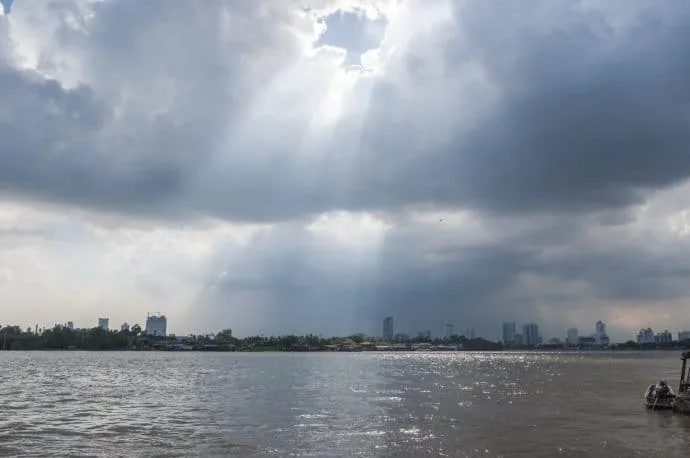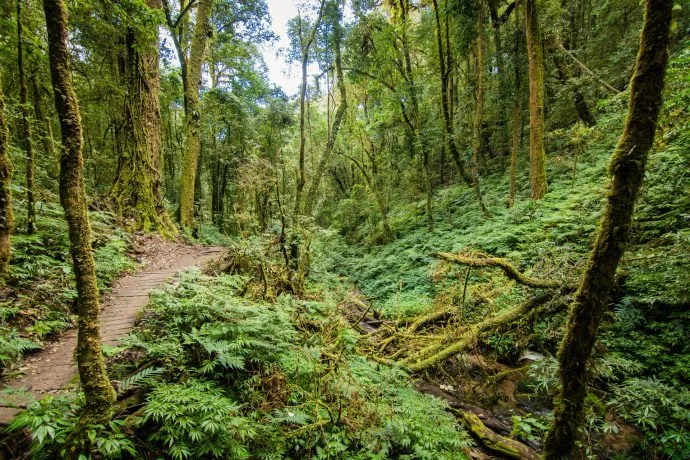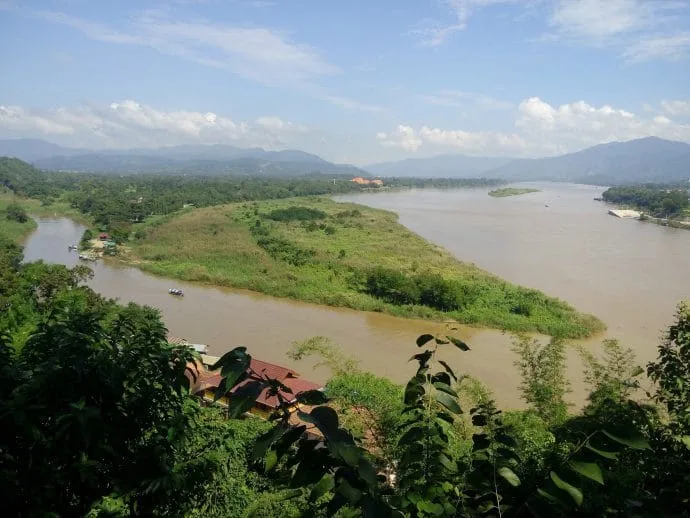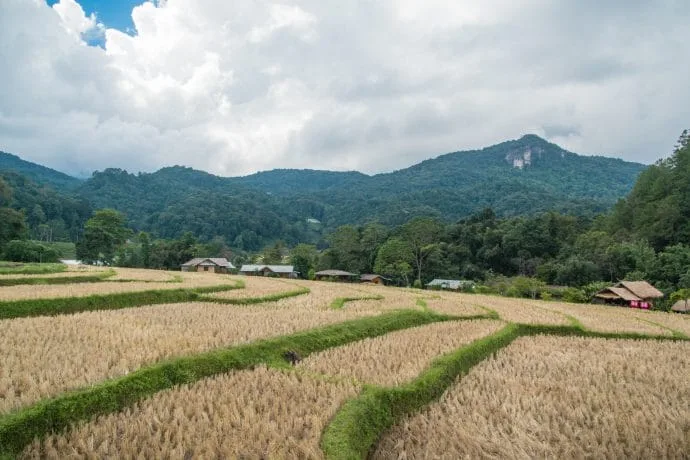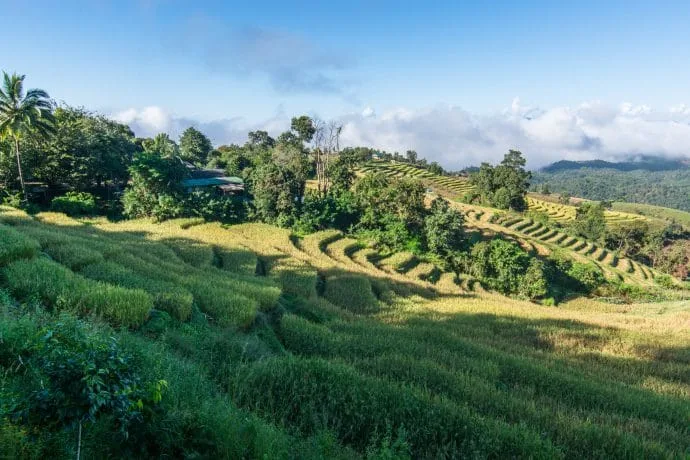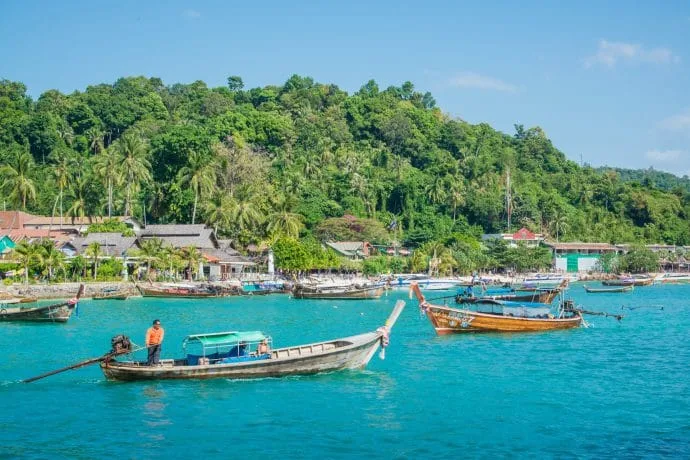Looking information about the climate in ThailandWhat will the weather be like during your next trip to Thailand? You've come to the right place! The main idea here is to explain, month by month, the characteristics of each season, along with the... advantages / disadvantages to come during such and such a time of year in Thailand.
I won't go into detail about specific places and cities here, but will focus on the regions as a whole. This is an opportunity to answer classic questions like "is Thailand really worth avoiding during the rainy season?", and how to make the most of it.
To complete, if you want more information about the climate of Thailand, there are several sites that cover the subject in more detail.
When to go to Thailand: a quick summary
Travel to beaches and islands (Phuket, Krabi, Koh Samui, Koh Phangan, etc.)
Goal : to make the most of the sea and sun, with a minimum of days spoiled by the weather.
- Andaman Coast (Phuket, Krabi, Lanta, Trang, Koh Lipe) : ideal time to November to March.
- Gulf of Thailand (Koh Samui, Koh Phangan, Koh Tao) : ideal time to March to September.
- To avoid : September–October for the Andaman; November–December for Samui and its neighbors.
Nature trip and Northern Thailand (Chiang Mai, Chiang Rai, mountains…)
- Ideal period: de November to the end of January (drier air, milder temperatures, often clear skies).
- Beautiful green season: de August to October (top-notch rice paddies, well-fed waterfalls, lush forests).
- Less pleasant: de February to April because of burning and fine particulate matter pollution (PM 2.5).
Combined trip: cities + nature + a bit of beach
- Best overall compromise: de November to February (Bangkok, North and South generally favorable).
- Interesting alternative: de July to early September : possible rain but superb vegetation and prices often lower.
- Avoid if you are sensitive to heat: the month ofApril (the hottest of the year, anywhere in the country).
Traveling on a tight budget
- Most economical period: de May to Octoberexcluding major holidays and public holidays.
- Good compromise: June and July : rain is present but often short, especially in some areas of the South.
- Things to watch out for: September is generally the wettest month in the country, especially for holidays that are very beach-oriented.
The 3 seasons in Thailand
A quick reminder: in Thailand, there are three seasons. In reality, there are two main periods — the dry season and the rainy season — but the intermediate period is distinct enough to be considered a season in its own right.
- From November to February — Thai “winter”
Milder temperatures (around 30°C), less humid air, clearer skies… It's the most pleasant time of year, especially in the North where nights can be cool at higher altitudes. It's the favorite season for most travelers, even if it doesn't have only advantages (I'll come back to that in a moment). - From February to May — the “hot” season
It's still the dry season, but the heat is definitely rising. April is the hottest month of the year, often around 38–40°C with high humidity. This is perfectly bearable in the South, but in the North, the landscape is parched after several months without rain. - From May to November — the rainy season
Sudden thunderstorms, sometimes heavy but not continuous downpours, changeable weather… Conditions vary greatly depending on the region and the month. Even if it's daunting, this season has its advantages (green landscapes, stunning rice paddies, brimming waterfalls) and no, it doesn't rain non-stop!
Please note: The transitions take place during pivotal months.
→ We come out of the rainy season in November.
→ The “summer” heat arrives during February.
→ The monsoon season usually starts in May.
Weather in Thailand month by month
1. Weather in Thailand in January
January is therefore part of what is called "winter", as mentioned above. It is considered a very good time to visit Thailand for several reasons.
+ For the positive points: The rainy season is over everywhere (north and south), which means good weather, blue skies, and since it is winter, more pleasant, less muggy temperatures.
In the mountains, it can even be cool or cold at night. It is a good month to visit the north of the country and observe the seas of clouds from the viewpoints overlooking the misty valleys in the morning. You can also see the superb sakuras, these ornamental trees in bloom, especially famous in Japan (but which bloom there in April).
– For the negative points: Obviously, the disadvantage is that it is a particularly touristy month, everyone is looking for the ideal weather and in addition, it is a period when people move around a lot due to the succession of Christmas, New Year, in the middle of school holidays.
This results in higher rates than off-season (up to +50%!) and little chance of enjoying your beach alone.


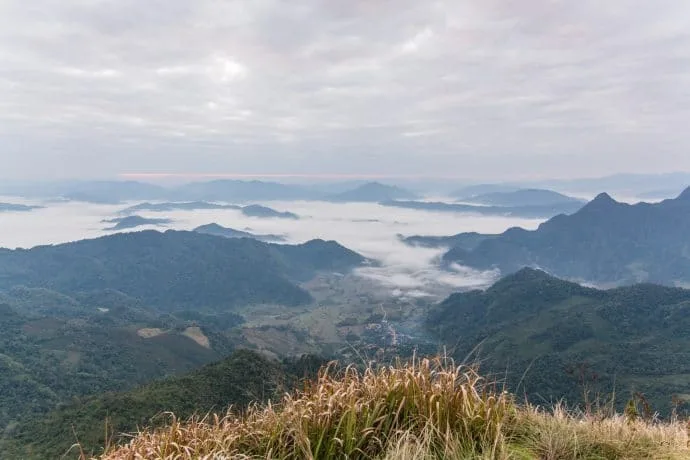


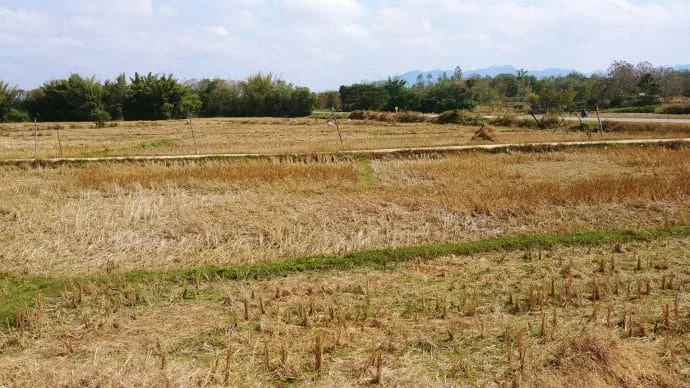
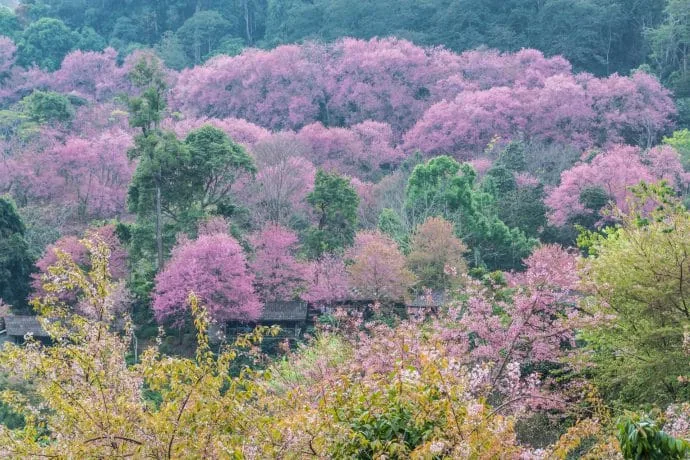
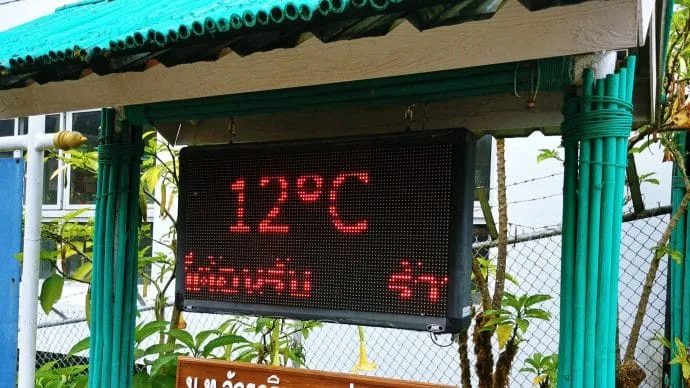
2. Weather in Thailand in February
February is still "winter," but you can already feel the transition to the warmer season. Temperatures are rising gradually, the air is becoming hazier, and the vegetation is turning yellow. According to the lunar calendar, you might also experience Chinese New Year, which is widely celebrated throughout the country.
+ Positive points:
- Little or no rain: it's still a good season for most regions.
- The north is starting to get less crowded, making visits more peaceful.
– Negative points:
- In the south, the high season is still in full swing: more crowded beaches and higher prices.
- In the north, the vegetation dries out after several months without rain: less green landscapes, more frequent heat haze.
- Few or no lush green rice paddies: even if some replanting exists, it is not as spectacular as in the good season for rice paddies.
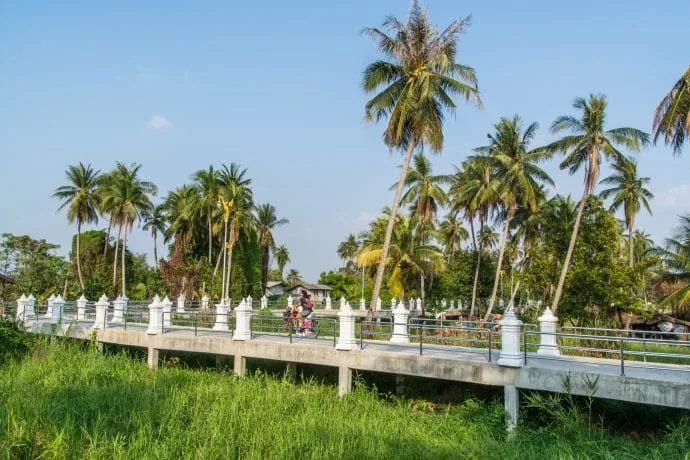

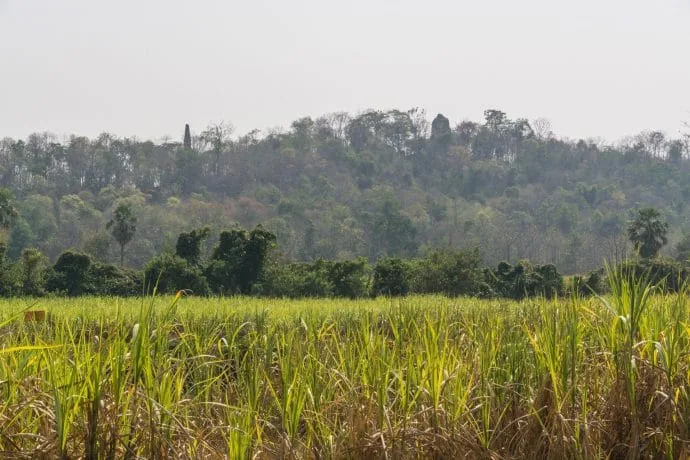



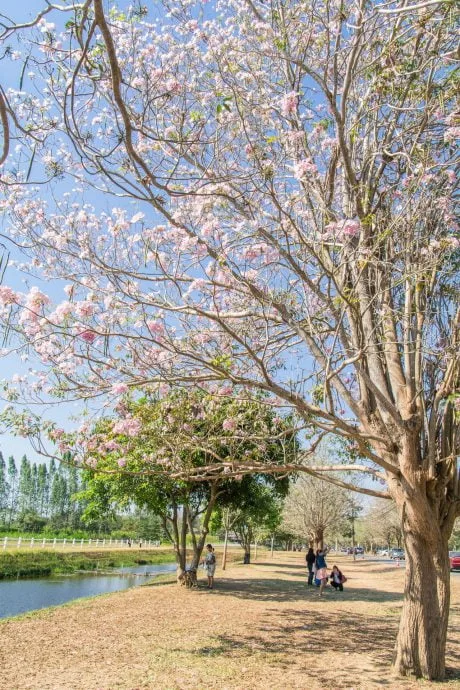
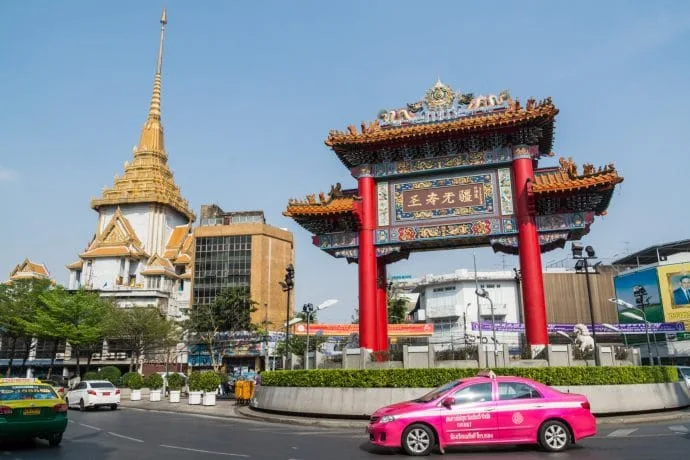

3. Weather in Thailand in March
March truly marks the beginning of summer: it's one of the hottest times of the year. The heat is oppressive, the humidity high, especially in cities.
+ Positive points:
- Fewer people than during the Christmas holidays.
- A very good time to visit the islands, both on the Gulf of Thailand and the Andaman Sea: the sea is often beautiful, with good visibility.
- If you are not focused on lush green jungle, this is a good season for Issan and its Khmer temples (e.g. Phimai).
- Lower river levels: some activities (eating with your feet in the water, calm streams, etc.) are easier.
– Negative points:
- The heat is humid and sometimes stifling, especially in Bangkok.
- Urban visits are more tiring: it is better to alternate cultural mornings with cool afternoons (shopping centre, hotel pool).
- In the north, heat haze is almost always present, and the vegetation is dry and dull: it's not the best month to enjoy the lush mountains.

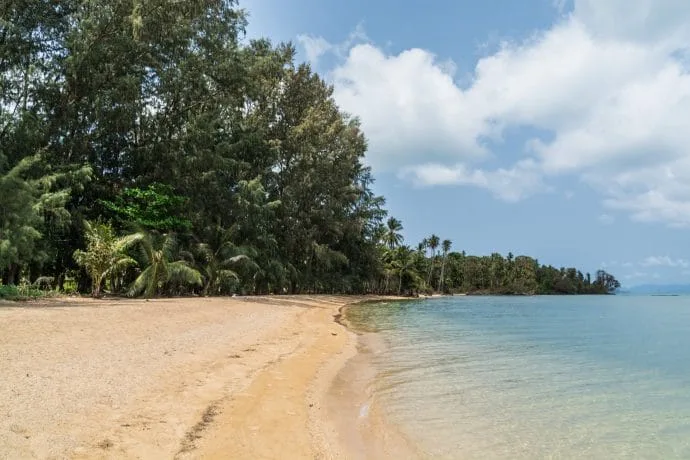
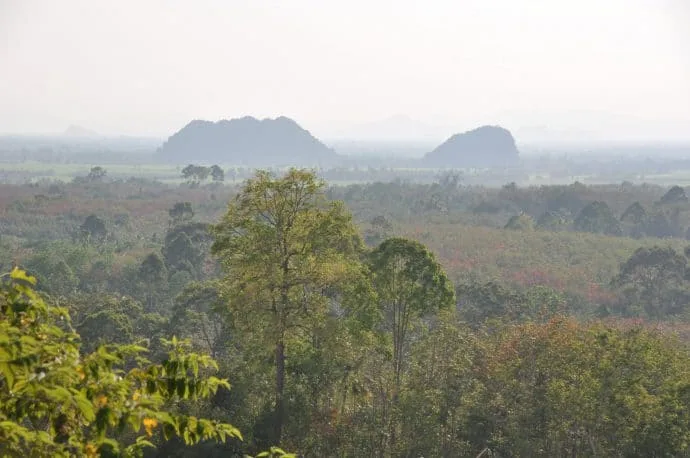





4. Weather in Thailand in April
April is the hottest month of the year in Thailand and corresponds to the Thai New YearSongkran, the famous water festival.
+ Positive points:
- If you like local festivals, this is the jackpot: Songkran is celebrated all over the country on April 13, 14 and 15 (often especially on the 13th in the south).
- A friendly atmosphere, giant water fights, much appreciated when it's 40°C.
- Good time to visit the islands in the Gulf of Thailand.
- In Issan, it's a great time to observe the low water level of the Mekong and discover sites like Sam Phan Bok, this “canyon” carved by the river.
– Negative points:
- Very busy period around New Year: full transport, full hotels, especially around mid-April.
- Extreme temperatures: 38–40 °C easily, with a perceived temperature often exceeding 45 °C.
- Towards the Andaman Sea, the weather is starting to deteriorate, although it is not yet the worst of the rainy season.
- In the north and central plains, the vegetation is very dry, the waterfalls sometimes reduced to a trickle of water: a much more arid atmosphere.

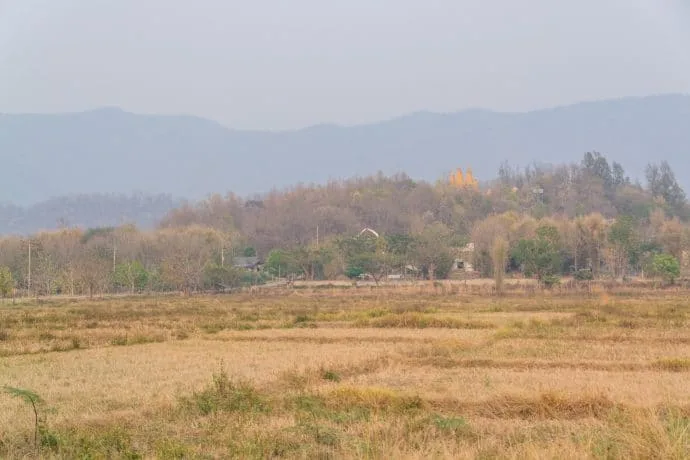
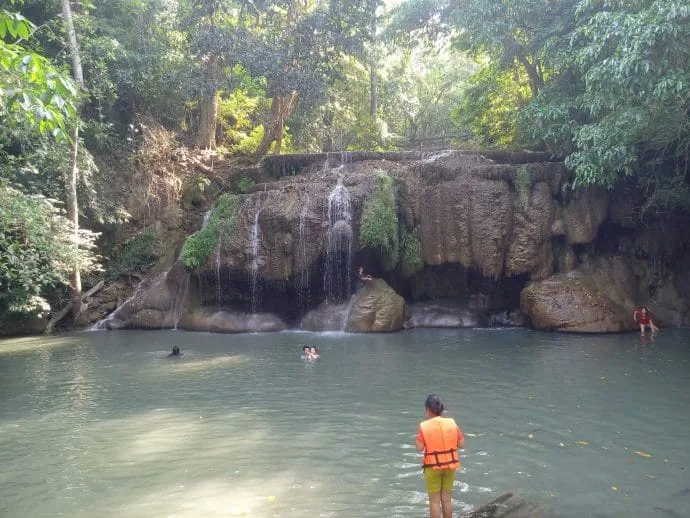
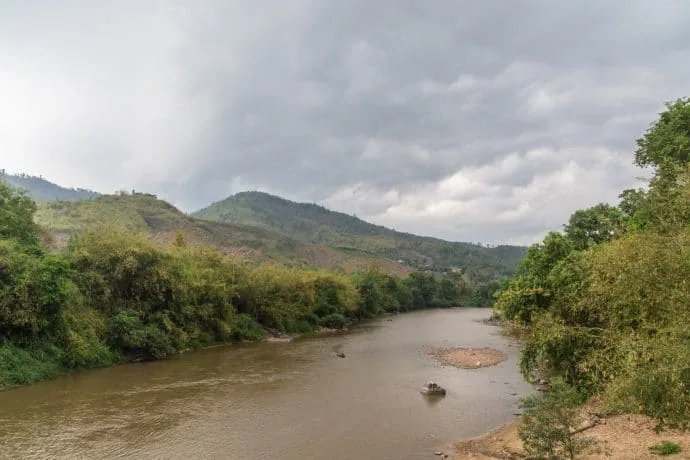

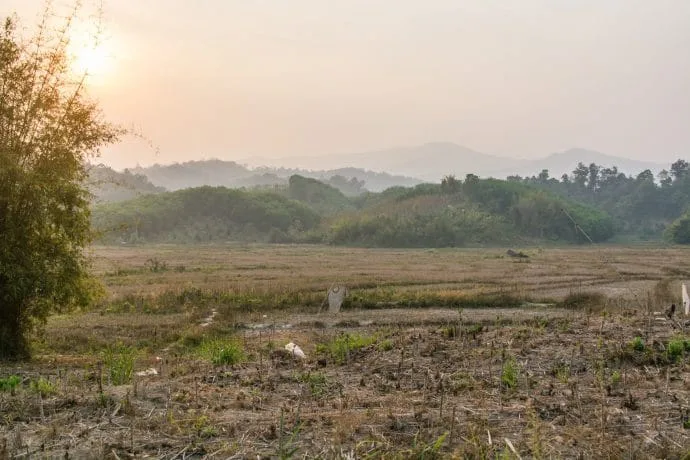
5. Weather in Thailand in May
May marks the official start of the rainy season. It often begins with a vengeance, as the month is frequently wetter than June. Several local festivals take place, notably in Hua Hin, the Yasothon Rocket Festival, and others. The Sacred Furrow Ceremony in Bangkok.
+ Positive points:
- The country is emptying out: if a changeable sky doesn't scare you, you'll be very peaceful.
- Rain is often concentrated at the end of the day: heavy, short showers rather than non-stop rain.
- The waterfalls are filling up, the vegetation is quickly turning green again.
- Lower prices than in peak season.
– Negative points:
- When it rains, it really rains: sometimes violent storms, especially in the south, rough seas and swimming not recommended on some days.
- In the north, there are still few or no rice paddies and the paths quickly become muddy for trekking.
- More mosquitoes with the humidity.

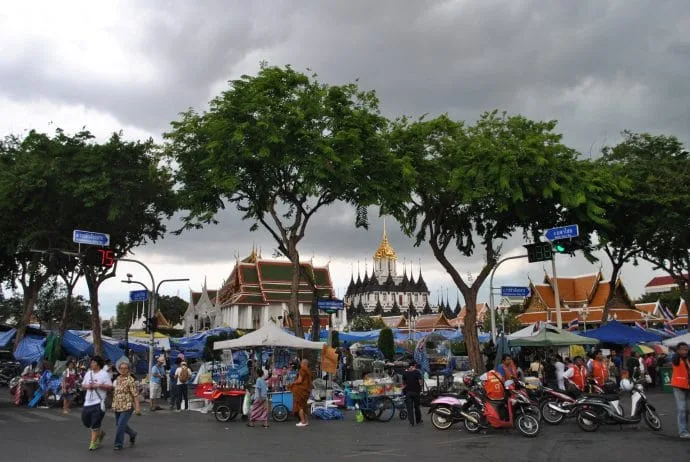

6. Weather in Thailand in June
June is a completely off-season month on paper, but it's not necessarily a bad month to be there.
+ Positive points:
- Between showers, periods of calm can last for a good part of the day.
- In the north and in the central plains, the rains are less violent than further south.
- Nature is becoming green and lush again.
- No international school holidays: attractive prices and fewer people.
– Negative points:
- The humid heat is still very much present.
- The rice paddies are not really there yet in the north: it is not the month for lush green rice landscapes.
- In the south, some areas receive more than 300 mm of rain during the month.
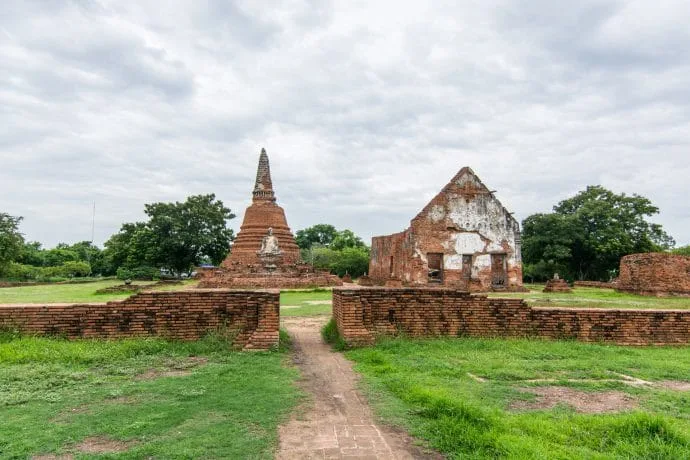
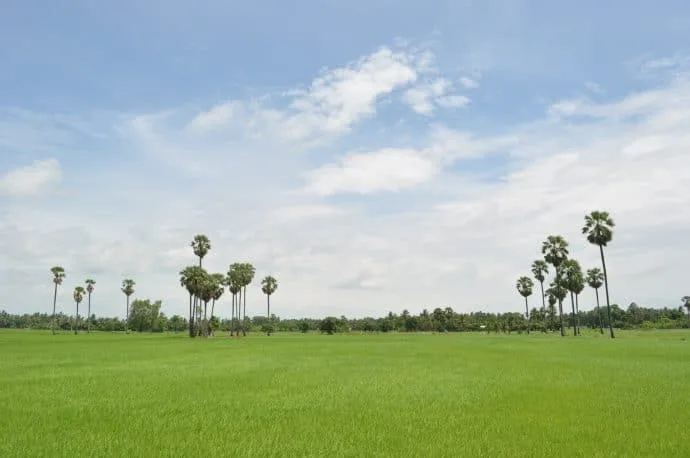
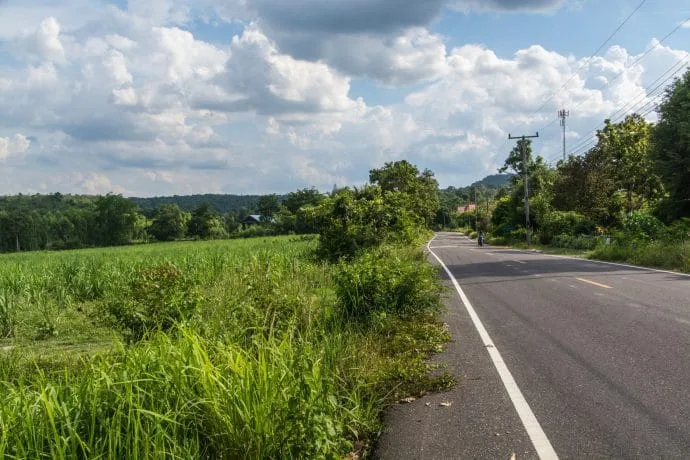
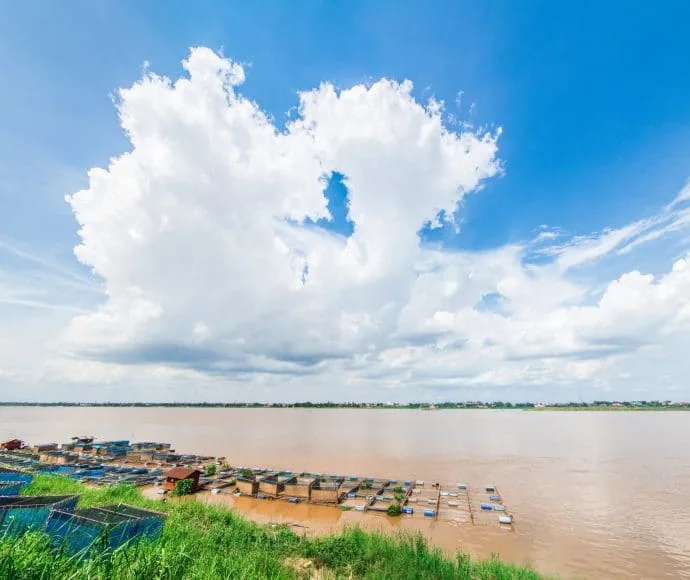
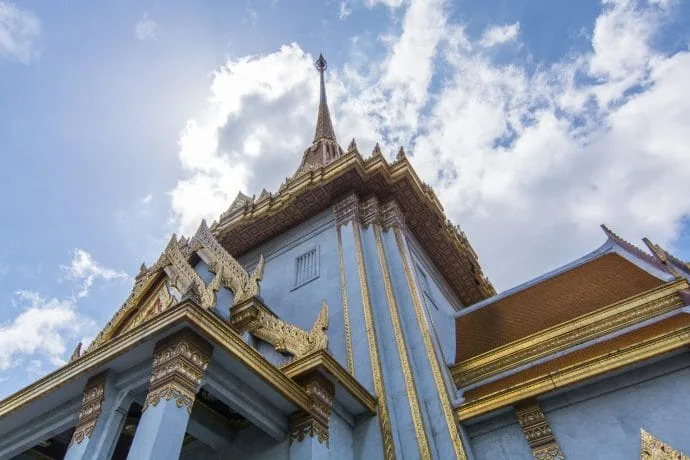
7. Weather in Thailand in July
Third month of the monsoon: the rains are frequent, but the blue skies haven't completely disappeared. Summer holidays bring quite a few families, who generally don't regret coming at this time of year.
+ Positive points:
- It's not the ideal time for non-stop sunshine, but the sun regularly breaks through the clouds.
- The clouds also provide welcome shade.
- Lower prices and less crowds than in the classic high season.
- This is the month when many rice paddies are planted: a great time to see the lush green fields in the north.
- The forests benefit from the humidity: very beautiful mountains and jungle around Chiang Mai / Chiang Rai.
- In the Gulf of Thailand (Ko Samui, Ko Phangan, Ko Tao), rain often falls in the late afternoon or at night, leaving beautiful days.
– Negative points:
- On the Andaman side (Phuket, Krabi, etc.), the situation is deteriorating: rougher sea, frequent showers.
- It's difficult to guarantee full days of relaxation without rain on these coasts.
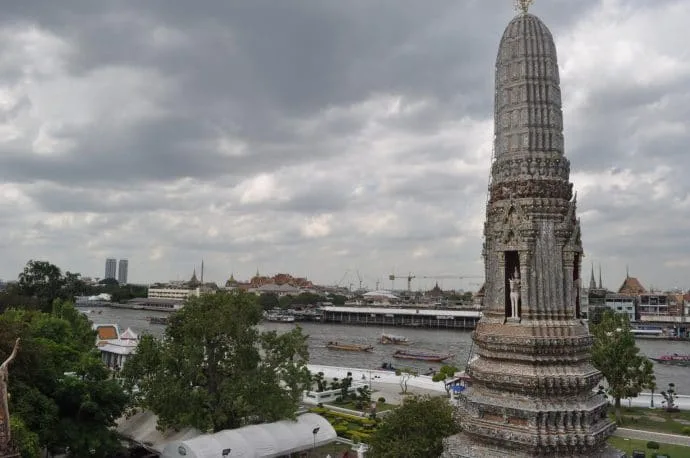
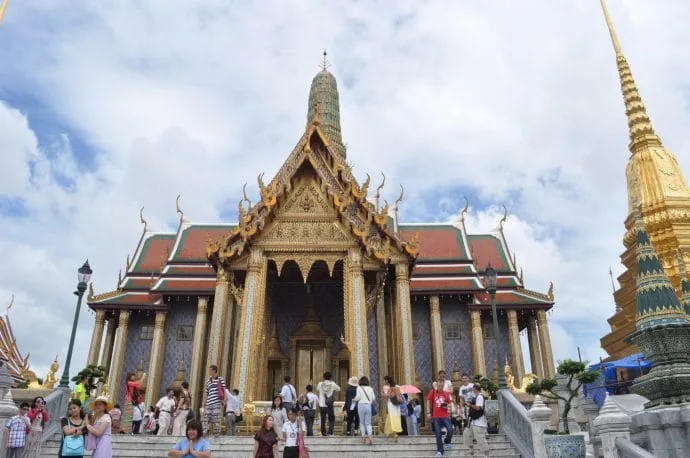
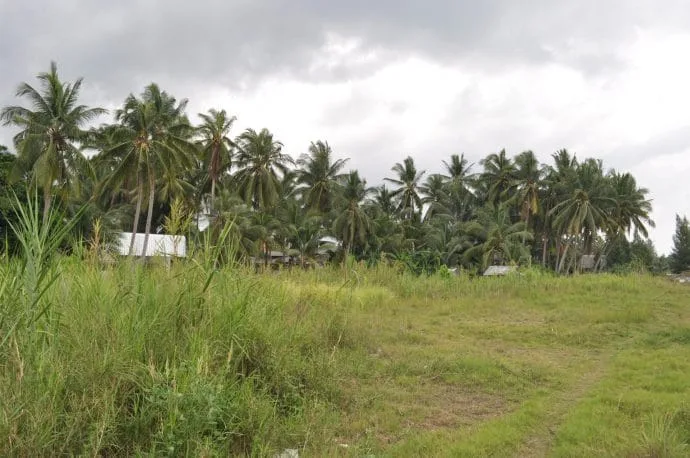

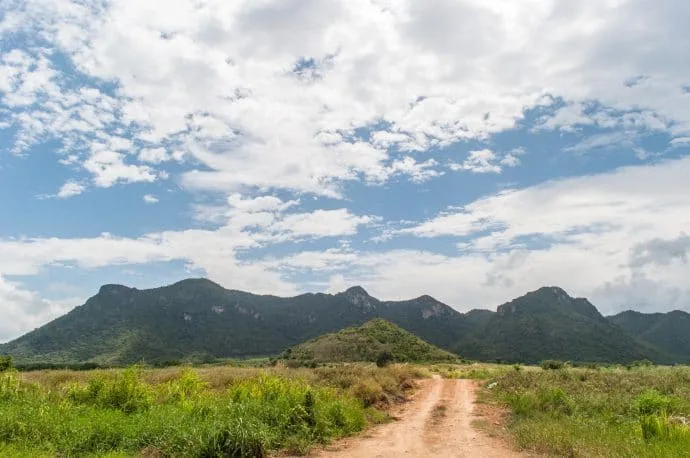
8. Weather in Thailand in August
Overall, August is very similar to July, with sometimes slightly more bearable temperatures.
+ Positive points:
- We are still not at the worst of the rainy season: beautiful windows of clear skies, especially in the Gulf of Thailand.
- Even in Phuket, there can be some very beautiful days, but nothing is guaranteed.
- The forests are at their greenest, and the rice paddies are abundant from the central plains to the mountains of Chiang Mai.
– Negative points:
- School holidays bring crowds to certain tourist spots.
- The rains are becoming more regular: you have little chance of escaping them completely.

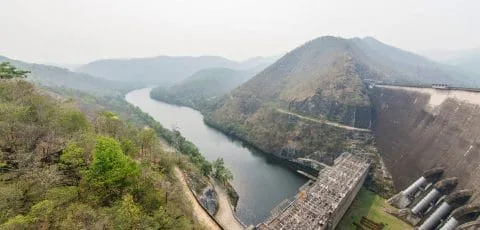
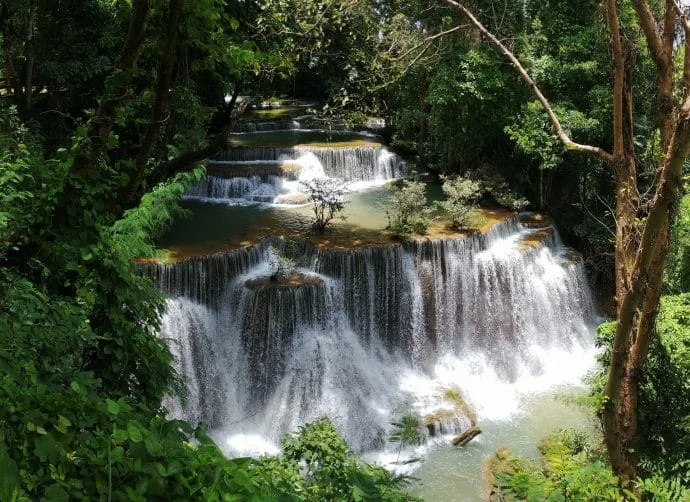
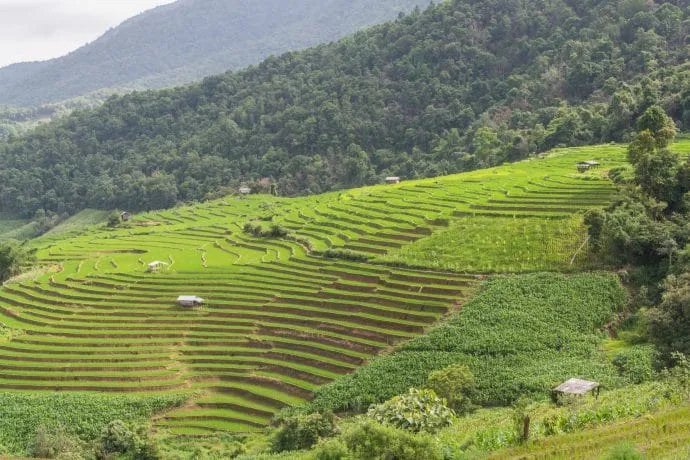



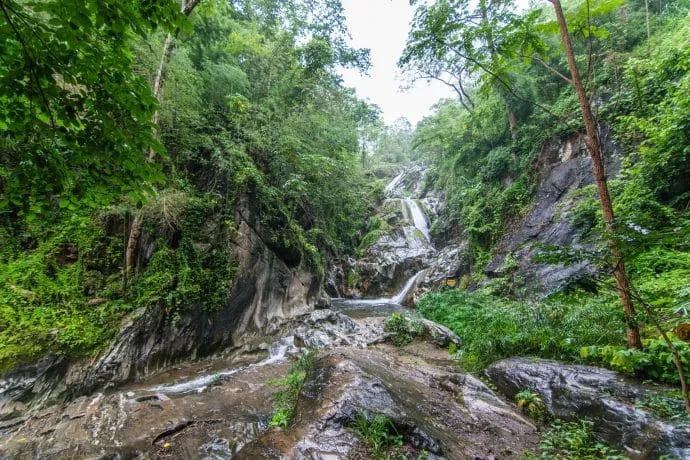
9. Weather in Thailand in September
September is one of the least pleasant months for weather in Thailand: it is often grey and humid over a large part of the country.
+ Positive points:
- Very few people: it's definitely off-season.
- Slight improvement in the far south (Tarutao archipelago, Ko Lipe) compared to August.
- Ko Samui is generally less bad than the Andaman coast (Phuket, Krabi, etc.).
- Nature is splendid: waterlogged forests, intensely green rice paddies.
– Negative points:
- In Bangkok, the plains and the north, it can be grey all day, with rain from the morning.
- It's not necessarily unpleasant to experience, but for the beach, forget about sunbathing.
- In the south, the sun rarely appears: overcast skies are very frequent.

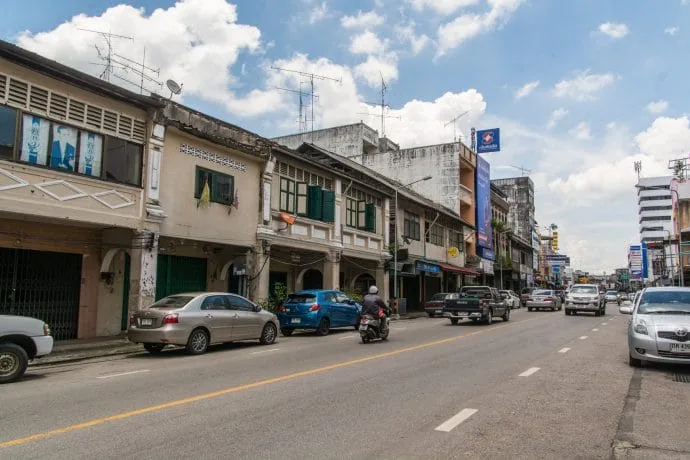

10. Weather in Thailand in October
October is still in the middle of the rainy season, although the north is starting to see the light at the end of the tunnel.
+ Positive points:
- It's still the off-season period, so the atmosphere is calmer and there are fewer crowds.
- From the second half of the month onwards, the Andaman Sea gradually becomes feasible again, although the weather remains very variable.
- In the north, the rains become less frequent towards the end of the month.
- The rice paddies are at their peak, the forests are overflowing with greenery.
- Warm temperatures but without the excesses of summer.
– Negative points:
- The rainy season is still very much present, especially in the Gulf of Thailand area.
- Localized flooding is possible in Bangkok and the plains.


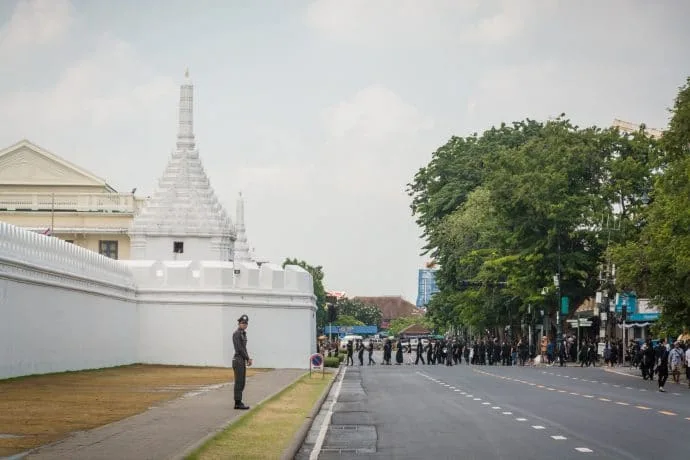


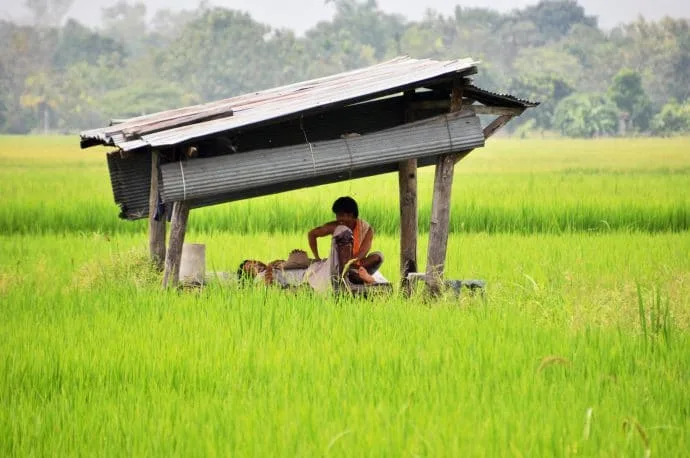
11. Weather in Thailand in November
In November, winter sets in: temperatures become milder and the rainy season ends in the plains and the north. It is also a month of festivities with the Loy Krathong Light Festival and, in Chiang Mai, the famous lantern release.
+ Positive points:
- The first two weeks of November are, for me, an ideal time to visit the north.
- End of the rainy season: return of sunshine and beautiful blue skies (with a few showers still possible).
- Lush mountains, jungle at its greenest, well-fed waterfalls.
- The rice paddies are starting to turn yellow: harvest time, very beautiful for photos.
- For beaches, the islands in the Gulf east of Bangkok are in good shape: Ko Chang, Ko Mak, Ko Kood, but also Ko Samet or Ko Larn.
– Negative points:
- For Ko Samui and the rest of the gulf further south, November is on the contrary the rainiest month: sea often murky, sky heavy.
- On the Phuket and Andaman Sea side, it's less catastrophic, but rain can still be frequent.
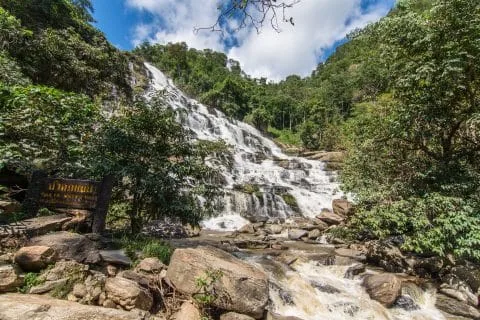

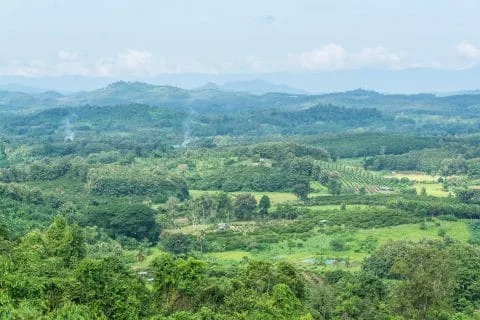
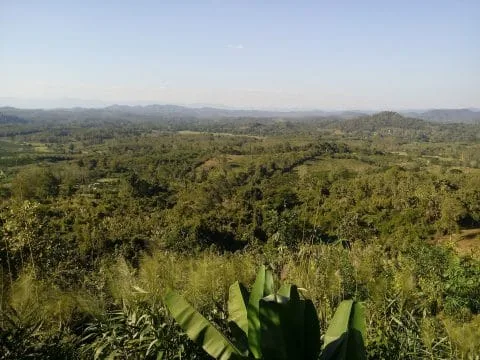
12. Weather in Thailand in December
In December, winter is definitely here: temperatures are more bearable, the north enjoys beautiful skies while the south is slowly emerging from its rainy season. It's a good option for celebrating Christmas in the warmth, even if not all coastal areas are quite at their best yet.
+ Positive points:
- In the north: beautiful skies, pleasant temperatures, no heatwave.
- Nature is still beautiful, the waterfalls still have a good flow.
- The views are very clear, especially at higher altitudes.
– Negative points:
- In the south, rain remains frequent, especially in the Gulf of Thailand; the Andaman Sea is improving more quickly.
- The rice paddies were harvested the previous month: the fields are generally empty or fallow.
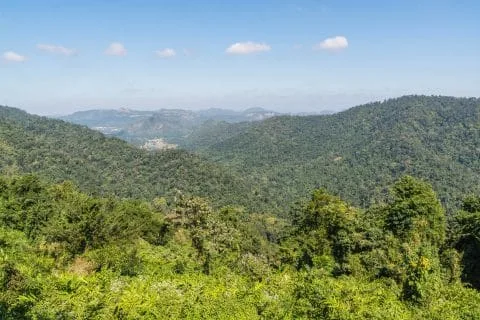
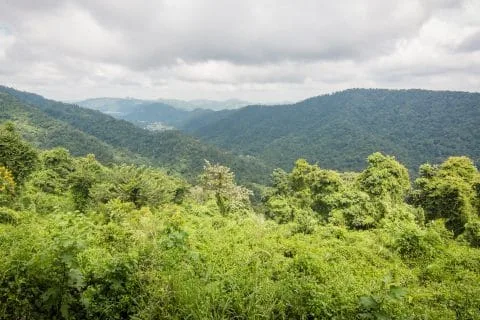
Weather in Thailand, an imprecise science
All this information is indicative and should be taken with a grain of salt. It primarily reflects my experience, which varies in scope depending on the region. I rarely go to the south during the height of the rainy season, although I have been to Phuket in October, for example.
The weather remains difficult to predict, especially in recent years where climate change is clearly having an impact. Some seasons start earlier, others drag on.
Weather is often a key concern when choosing a destination We all dream of good weather to make the most of our holidays. But the idea of this summary is also to show that each month has its advantages and disadvantages, and to put the famous "rainy season" into perspective.
Traveling to Thailand during the rainy season isn't necessarily a bad thing. This factor alone shouldn't deter you from visiting the country. The monsoon season is nothing like the much more violent ones experienced in some parts of South Asia, such as India.
Overall, Thailand is relatively spared from natural disasters. Apart from flash floods (flash flood), there are no typhoons as such. The country generally only receives tropical storms, as typhoons lose strength upon reaching the coasts of Vietnam after crossing the South China Sea.



